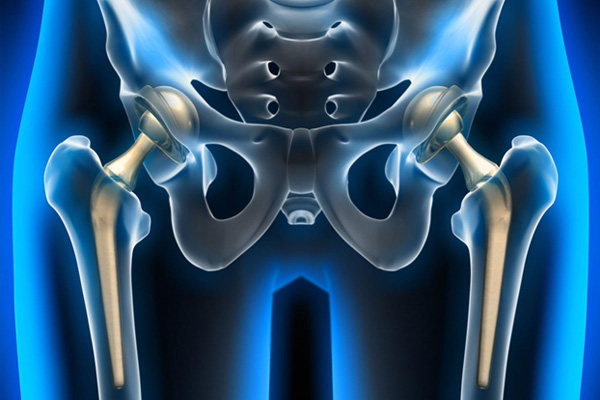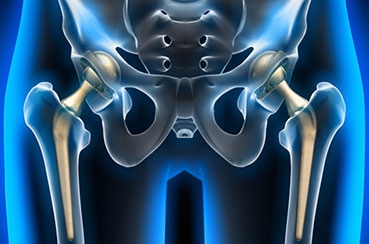Is constant hip pain making it difficult for you to move freely and enjoy daily life? When both hips are severely affected by arthritis or other joint conditions, even simple activities like walking, climbing stairs, or getting out of bed can become a challenge. In such cases, bilateral hip replacement could be a life-changing solution. But should you undergo surgery for both hips at once or opt for separate procedures? This decision depends on various factors, including your overall health, lifestyle, and recovery goals. In this guide, we’ll explore the benefits, risks, and key considerations of bilateral hip replacement, helping you make an informed choice for a pain-free future.

Who Should Consider Bilateral Hip Replacement?
Bilateral hip replacement is recommended for individuals suffering from severe osteoarthritis, rheumatoid arthritis, avascular necrosis, hip dysplasia, or congenital hip disorders that significantly affect both hips. Patients who experience chronic pain, stiffness, reduced mobility, or difficulty performing daily activities like walking, standing, or climbing stairs may be ideal candidates for this procedure. Additionally, younger, healthier individuals with good bone strength and minimal medical conditions may benefit more from undergoing a simultaneous bilateral hip replacement rather than two separate surgeries.
Is the Direct Anterior Approach Suitable for Bilateral Hip Replacement?
Yes, the Direct Anterior Approach can be used for bilateral hip replacement, but its suitability depends on the patient’s overall health, body type, and surgeon’s expertise. This approach allows for faster recovery, reduced pain, and a lower risk of dislocation, which can be beneficial for patients undergoing surgery on both hips. However, because it requires a specialized surgical table and precise technique, not all surgeons perform bilateral hip replacement using this method.
How Does Recovery Differ After Bilateral Hip Replacement Using the Direct Anterior Approach?
Recovery after bilateral hip replacement using the Direct Anterior Approach is often faster compared to traditional methods because the procedure preserves muscles and soft tissues. Patients typically experience less pain, regain mobility sooner, and may walk with assistance within a few days. However, because both hips are operated on simultaneously, initial mobility can be more challenging, and a structured rehabilitation plan is crucial for a smooth recovery.
What Are the Advantages of Bilateral Hip Replacement?
Opting for a bilateral hip replacement instead of two separate procedures comes with several benefits, including:
- Shorter Overall Recovery Time: Since both hips are replaced simultaneously, the total recovery period is shorter than undergoing two separate surgeries months apart.
- Balanced Rehabilitation: Having both hips replaced at the same time ensures that the body adjusts evenly, reducing gait imbalances or postural issues.
- Fewer Hospital Visits: A single hospitalization and anesthesia session mean fewer medical visits, reducing the overall treatment timeline.
- Cost-Effective: In many cases, undergoing one surgery instead of two can be more economical, as it minimizes costs related to hospitalization, anesthesia, and rehabilitation.
- Less Psychological Stress: Facing surgery only once can help alleviate anxiety and mental stress associated with multiple surgical procedures.
How Does Bilateral Hip Replacement Differ from Staged Hip Replacement?
- Bilateral Hip Replacement (Simultaneous Surgery): Both hips are replaced in a single surgical session, leading to a faster overall recovery and fewer hospital visits.
- Staged Hip Replacement: One hip is replaced first, followed by the second hip several months later, allowing the patient to fully recover before undergoing the second procedure. This is ideal for patients who have other health concerns or require a more gradual approach to recovery.
How Long Does It Take to Recover from Bilateral Hip Replacement?
Recovery time varies based on individual health conditions and commitment to rehabilitation. Typically:
- Walking begins within 24 hours post-surgery using assistive devices like walkers or crutches.
- Initial recovery takes 1 week, during which mobility improves significantly.
- Full recovery and return to normal activities usually take 2-6 weeks, depending on physiotherapy and adherence to post-operative care.
Is it Safe to Replace Both Hips at the Same Time?
Yes, for healthy and active individuals, replacing both hips simultaneously is generally safe and offers a shorter overall recovery time. However, patients with heart disease, diabetes, or other underlying conditions may be advised to undergo staged surgeries to reduce risks related to anesthesia and post-surgical complications. A thorough evaluation by your surgeon will determine the safest option for you.
What Is the Role of Physiotherapy in Recovery?
Physiotherapy is crucial in ensuring a smooth and successful recovery after bilateral hip replacement. It helps by:
- Strengthening muscles around the hip joint, reducing strain on the implant.
- Improving balance and coordination, preventing falls and injuries.
- Enhancing flexibility, allowing better movement and functionality of the new hips.
- Speeding up rehabilitation, enabling a quicker return to daily activities.
Can You Walk Immediately After Bilateral Hip Replacement?
Yes, most patients can start walking within a day after surgery with the help of a walker or crutches. Early mobilization is encouraged to prevent stiffness, blood clots, and complications. Over time, patients transition from walking aids to independent movement within a few weeks.
How Does a Patient’s Age Impact the Success of Bilateral Hip Replacement?
Age can influence recovery speed and outcomes:
- Younger patients (below 60 years) often recover faster due to better muscle strength and bone quality.
- Older patients (above 65 years) may require additional physiotherapy and a longer rehabilitation period to regain full mobility.
Is Robotic-Assisted Bilateral Hip Replacement a Better Option?
Robotic-assisted surgery enhances precision by using 3D imaging and guided techniques, offering:
- Greater accuracy in implant placement.
- Reduced damage to surrounding tissues.
- Faster healing and reduced pain, leading to a smoother post-operative experience.
Finding the Right Surgeon for Your Hip Replacement in Mumbai
Choosing an experienced and skilled surgeon is the key to a successful hip replacement surgery. Dr. Supreet Bajwa, a renowned Fellowship-Trained Hip & Knee Orthopaedic Surgeon, specializes in Minimally Invasive and Robotic-Assisted Hip Replacements.
Why Choose Dr. Supreet Bajwa?
- Expertise in Advanced Techniques: Proficient in Direct Anterior Hip Replacement, ensuring a faster and smoother recovery.
- Minimally Invasive Approach: Less pain, reduced scarring, and quicker rehabilitation.
- Extensive Experience: Over 10+ years in Orthopaedics, with 1300+ successful hip & knee replacements performed.
- Innovative Pain Management: One of the few surgeons in India offering Cooled Radiofrequency Ablation for chronic hip pain.
Where to Consult Dr. Bajwa?
Dr. Bajwa practices at leading hospitals in Mumbai, including:
- Wockhardt Hospital (Mumbai Central & Mira Road)
- Bajwa Orthopedic Specialist Services Clinic – Your trusted destination for expert orthopedic care.
For Appointments: Call +91 9820727046


